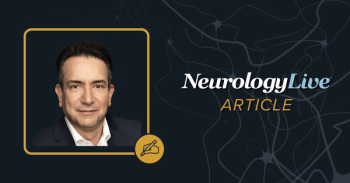
Planning for the Unplanned: Keeping People With Epilepsy Safe During Uncertainty
The importance of being prepared for the unexpected, including having a seizure action plan and having access to rescue medication, is paramount to ensuring continuity of care for patients with epilepsy.
UCB Sponsored Content
As healthcare providers and clinicians, it is critical to acknowledge and recognize that the uncertainty brought on by the COVID-19 pandemic has impacted people living with epilepsy. Life with epilepsy brings challenges and uncertainty in the best of times, and it is no surprise that those challenges are heightened when living through stressful and disruptive events. Over the past year, UCB set out to better understand how this world-altering event was affecting epilepsy patients and what we could do to improve their quality of life during these anxiety-inducing times.
Following the COVID-19 outbreak in 2020,
Giving Patients a Sense of Security at Home
These findings in Neurology have provided additional insights to companies like UCB on how to focus care pathways for people living with epilepsy. This includes keeping patients out of healthcare facilities, if possible, and ensuring they always have a detailed plan developed in partnership with their healthcare provider that allows them to receive the care they need at home.1
As a result, UCB is committed to raising awareness of some of the tools and medicines that may help people living with epilepsy. These include:
Having a seizure action plan in place. Supported by a decades-long legacy in treating epilepsy, UCB understands the importance of having a readily available, comprehensive seizure action plan, which may include a rescue medication. Plans should include all of the medications a patient needs in addition to information about what should happen if caregivers are not available. Having a comprehensive plan in place can give patients and caregivers a stronger sense of safety and security so they know what to do when a seizure or seizure emergency occurs.
- Access to rescue medication. Having access to rescue medications like NAYZILAM® (midazolam) nasal spray, CIV – the first nasal treatment approved by the U.S. Food and Drug Administration for seizure clusters in patients with epilepsy 12 years of age and older – can help patients be prepared to treat outside of the hospital setting.2 See below for important product safety information.
Minimizing Risk Through Medication Adherence
Neurology also suggests that the importance of adherence to antiepileptic medicines while maintaining usual routines can help people living with epilepsy maintain seizure control.1 UCB offers support through:
- Regular supply of seizure medicines.For epilepsy patients, in general, adherence to treatment can help with seizure control. One treatment option for partial onset seizures in patients 4 years of age and older is BRIVIACT® (brivaracetam) CV. BRIVIACT injection is only indicated for use in adult patients when oral administration is temporarily not feasible. A therapeutic dose for BRIVIACT can be achieved on the first day of treatment.3 See below for important product safety information.
- Medication adherence solutions. Providing patients with tools they need to adhere to treatment regimens also can help, which may be especially true during the COVID-19 pandemic when patients may be separated from family members or caregivers who had helped administer treatment. UCB’s goal – through our work with Medisafe – is to support patients in starting and staying on track with their treatment through the help of a user-friendly digital platform available to download as a free app.
“Given the uniqueness of this past year, we have deepened our understanding of what’s important to people living with epilepsy as well as their changing needs during challenging times,” said Mike Davis, Head of US Neurology at UCB. “At UCB, we believe that partnering with patients on their care journey can make a real impact, and we continue to explore solutions to improve their day-to-day experience living with epilepsy.”
Using Lessons Learned to Rethink Care Pathways
This time of unease and crisis has solidified the importance of good care pathways to ensure that people living with epilepsy feel protected and prepared to address all symptoms of their condition, no matter what. Whether it be through access to a supply of regular or emergency medications, or access to medication adherence tools, having a comprehensive seizure action plan in place can provide reassurance to patients when variables outside clinical walls are beyond their control.
About NAYZILAM® (midazolam) nasal spray CIV2
NAYZILAM, the first nasal spray indicated for the acute treatment of stereotypic episodes of frequent seizure activity (i.e. seizure clusters, acute repetitive seizures) that are distinct from a patient’s usual seizure pattern in patients with epilepsy 12 years of age and older. NAYZILAM was approved by the U.S. FDA in May 2019. More Information is available at
NAYZILAM SELECT IMPORTANT SAFETY INFORMATION
CONTRAINDICATIONS
NAYZILAM is contraindicated in patients with acute narrow-angle glaucoma.
RISKS FROM CONCOMITANT USE WITH OPIOIDS
Concomitant use of benzodiazepines, including NAYZILAM, and opioids may result in profound sedation, respiratory depression, coma, and death. Reserve concomitant prescribing of these drugs for patients for whom alternative treatment options are inadequate. Limit dosages and durations to the minimum required. Follow patients for signs and symptoms of respiratory depression and sedation.
ABUSE, MISUSE, AND ADDICTION
The use of benzodiazepines, including NAYZILAM, exposes users to risks of abuse, misuse, and addiction, which can lead to overdose or death. Abuse and misuse of benzodiazepines commonly involve concomitant use of other medications, alcohol, and/or illicit substances, which is associated with an increased frequency of serious adverse outcomes. Before prescribing NAYZILAM and throughout treatment, assess each patient’s risk for abuse, misuse, and addiction.
DEPENDENCE AND WITHDRAWAL REACTIONS AFTER USE OF NAYZILAM MORE FREQUENTLY THAN RECOMMENDED
The continued use of benzodiazepines may lead to clinically significant physical dependence. The risks of dependence and withdrawal increase with longer treatment duration and higher daily dose. Although NAYZILAM is indicated only for intermittent use, if used more frequently than recommended abrupt discontinuation or rapid dosage reduction of NAYZILAM may precipitate acute withdrawal reactions, which can be life-threatening. For patients using NAYZILAM more frequently than recommended, to reduce the risk of withdrawal reactions, use a gradual taper to discontinue NAYZILAM.
RISKS OF CARDIORESPIRATORY ADVERSE REACTIONS
Serious cardiorespiratory adverse reactions have occurred after administration of midazolam. Warn patients and caregivers about the risks of respiratory depression, cardiac and respiratory arrest.
Respiratory depression was observed with the administration of NAYZILAM during clinical trials. Cardiac or respiratory arrest caused by NAYZILAM was not reported during clinical trials.
CENTRAL NERVOUS SYSTEM DEPRESSION FROM CONCOMITANT USE WITH OTHER CENTRAL NERVOUS SYSTEM DEPRESSANTS, OR MODERATE OR STRONG CYP3A4 INHIBITORS
Drug products containing midazolam, including NAYZILAM, have a central nervous system (CNS) depressant effect.
Risks from Concomitant Use with Other CNS Depressants
NAYZILAM may cause an increased CNS-depressant effect when used with alcohol or other CNS depressants (e.g., opioids). Warn patients and caregivers that the use of NAYZILAM in combination with alcohol or other CNS depressant drugs may increase the risk of hypoventilation, airway obstruction, desaturation, or apnea and may contribute to profound and/or prolonged drug effect.
Risks from Concomitant Use with Moderate or Strong CYP3A4 Inhibitors
Concomitant use of NAYZILAM with moderate or strong CYP3A4 enzyme inhibitors may result in prolonged sedation because of a decrease in plasma clearance of midazolam. Caution patients against engaging in hazardous occupations requiring mental alertness, such as operating machinery, driving a motor vehicle or riding a bicycle until they have completely returned to their level of baseline functioning.
SUICIDAL BEHAVIOR AND IDEATION
Antiepileptic drugs (AEDs), including NAYZILAM, increase the risk of suicidal thoughts or behavior in patients taking these drugs for any indication. Monitor patients treated with NAYZILAM for the emergence or worsening of depression, suicidal thoughts or behavior, and/or any unusual changes in mood or behavior. Advise patients and caregivers to be alert for these behavioral changes and to immediately report them to the healthcare provider.
IMPAIRED COGNITIVE FUNCTION
Midazolam, including NAYZILAM, is associated with a high incidence of partial or complete impairment of recall for several hours following an administered dose. Counsel patients on when they can engage in activities requiring complete mental alertness, operate hazardous machinery, or drive a motor vehicle after taking NAYZILAM.
GLAUCOMA
Benzodiazepines, including NAYZILAM, can increase intraocular pressure in patients with glaucoma. NAYZILAM may be used in patients with open-angle glaucoma only if they are receiving appropriate therapy. NAYZILAM is contraindicated in patients with narrow-angle glaucoma.
ADVERSE REACTIONS
In the randomized, double-blind, placebo-controlled trial, the most common adverse reactions (≥5% in any NAYZILAM treatment group) were somnolence, headache, nasal discomfort, throat irritation, and rhinorrhea.
NAYZILAM is a Schedule IV controlled substance.
About BRIVIACT® (brivaracetam) CV3
BRIVIACT® was approved in the U.S. in 2016 as an add-on therapy for adult patients. BRIVIACT was approved as monotherapy for adults in September 2017, and as monotherapy or adjunctive therapy in patients four years of age and older with partial-onset seizures in 2018. BRIVIACT® is available in three formulations: oral tablets, oral solution, and intravenous (IV) injection. More information is available at
BRIVIACT INDICATION AND SELECT IMPORTANT SAFETY INFORMATION
BRIVIACT (brivaracetam) CV is indicated for the treatment of partial-onset seizures in patients 4 years of age and older. As the safety of BRIVIACT injection in pediatric patients has not been established, BRIVIACT injection is indicated for the treatment of partial-onset seizures only in adult patients (16 years of age and older).
BRIVIACT is associated with important warnings and precautions including suicidal behavior and ideation, somnolence, fatigue, dizziness, disturbance in gait and coordination, psychiatric adverse reactions including nonpsychotic and psychotic symptoms, and hypersensitivity reactions (bronchospasm and angioedema). BRIVIACT is contraindicated in patients with a prior hypersensitivity reaction to brivaracetam or any of the inactive ingredients.
In adult adjunctive therapy placebo-controlled clinical trials, the most common adverse reactions (at least 5% for BRIVIACT and at least 2% more frequently than placebo) were somnolence and sedation, dizziness, fatigue, and nausea and vomiting symptoms. Adverse reactions reported in clinical studies of pediatric patients 4 years to less than 16 years of age were generally similar to those in adult patients. BRIVIACT is a Schedule V controlled substance.
For additional medical information about NAYZILAM, BRIVIACT, patient assistance, or any other information, please visit our
REFERENCES
1. French JA, Brodie MJ, Caraballo R, et al. Keeping people with epilepsy safe during the COVID-19 pandemic. Neurology. 2020;94(23):1032-1037. doi:10.1212/WNL.0000000000009632
2. NAYZILAM® (midazolam) nasal spray CIV. U.S. Prescribing Information
3. BRIVIACT® (brivaracetam) CV. U.S. Prescribing Information
BRIVIACT®, NAYZILAM®, and ucbCARES® are registered trademarks of the UCB Group of Companies.
©2021 UCB, Inc., Smyrna, GA 30080. All rights reserved.
US-P-BR-EPOS-2100055
Newsletter
Keep your finger on the pulse of neurology—subscribe to NeurologyLive for expert interviews, new data, and breakthrough treatment updates.



























